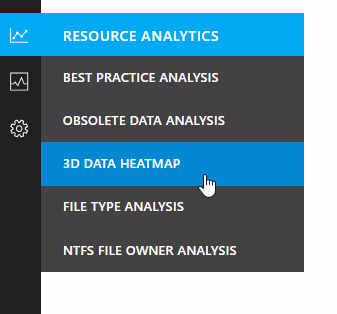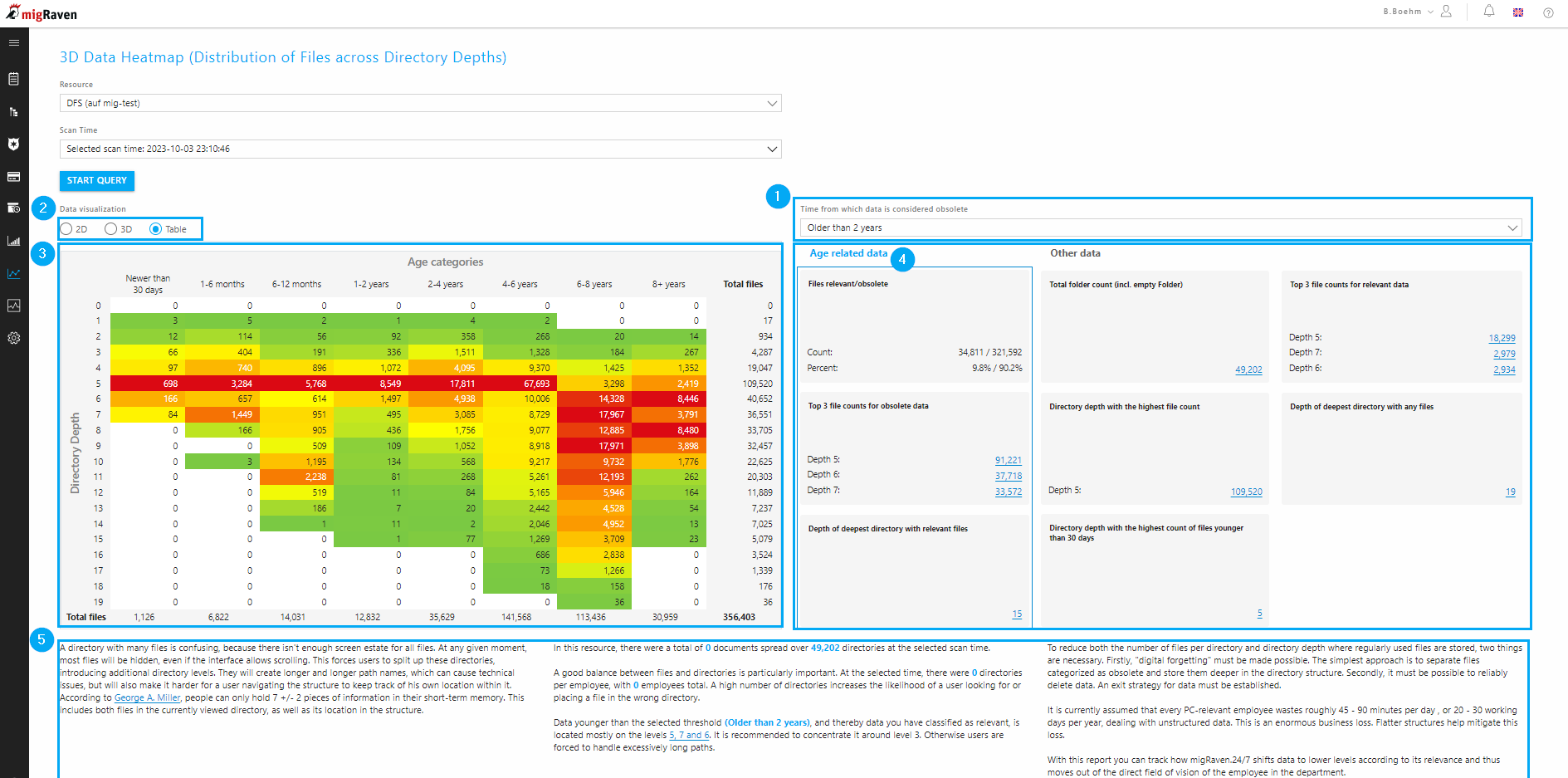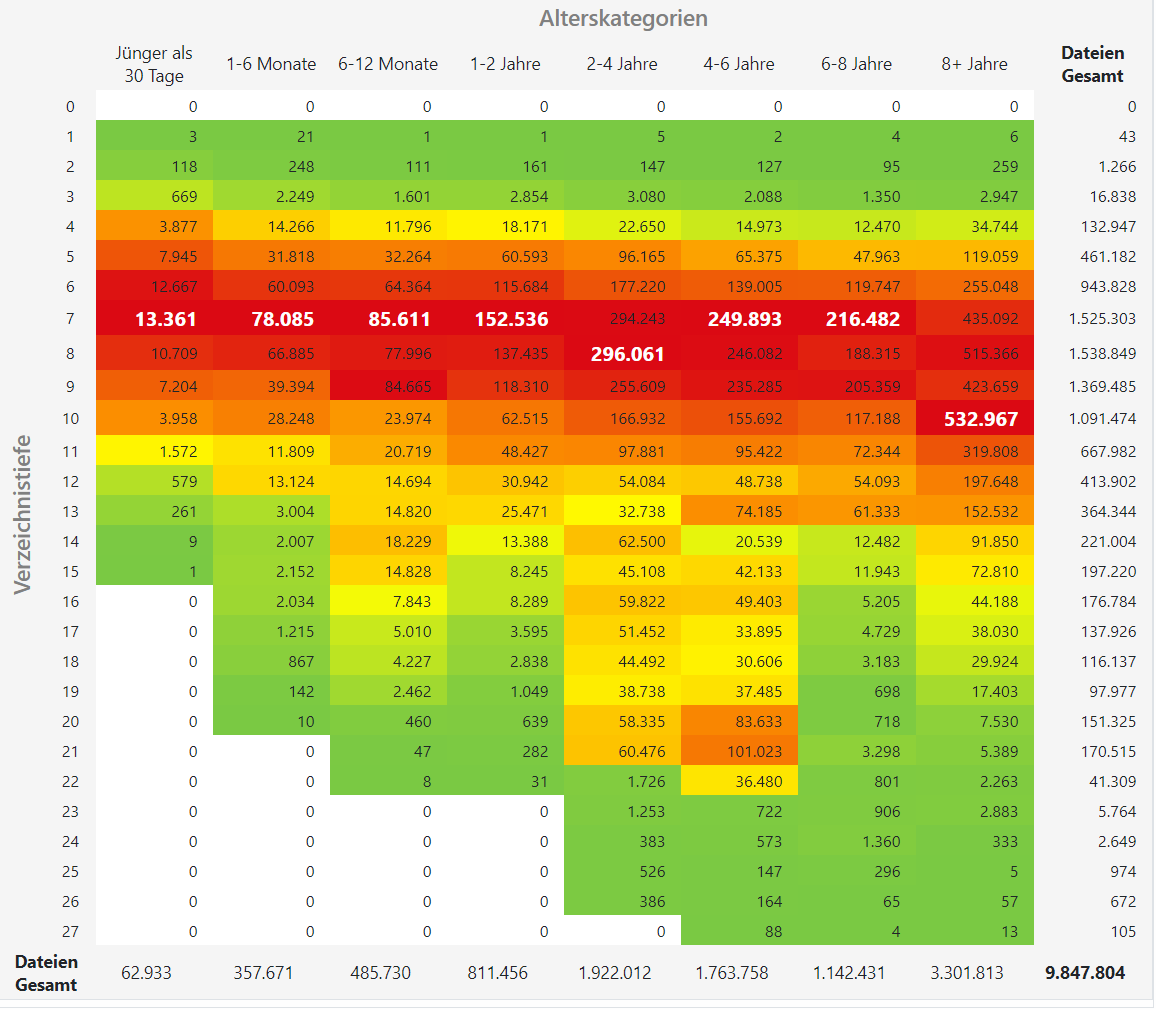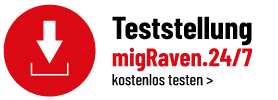Table of Contents
What do you get out of it
- You can analyze the existing structures at a glance,
- You can initiate targeted optimizations,
- You can use the potential of migRaven.24 / 7 Exploring data retention.
If you never clean up, it will eventually pile up. The same is true with the data. Only in the opposite direction. The amount of documents determines the number of directories, the number of directories determines the depth of the directories. Once a certain amount is reached, the user structures the storage further and further. This means that the data is deeper and deeper. This is particularly unfavorable when the latest data is at ever deeper levels.
The most recent data should always be at the top. Then the user can find these documents, which probably have the highest relevance, much faster and does not waste valuable working time searching. In addition, subsequent errors are avoided, for example because he did not find the right version but continued to work on an old/wrong version.
The 3D data analysis shows the current status of the structure in three different displays (2D, 3D, table). Access to this analysis is available to administrators and data owners.
Start the analysis in migRaven.24 / 7 Web Client
The analysis can be found in the navigation in the resource analysis area:

In the next step, select a resource (1) and the scan time (2) out of. By default, the last (most current) scan time is preselected. You can optionally select a different scan time using the drop-down menu. By clicking on “Start query” (3) the report is loaded.

As soon as the report is loaded, the following picture appears:

Explanation of the report:
- Point in time from when data is considered obsolete
You can use this drop-down menu to set when the report should view data as obsolete. The period ranges from “older than 30 days” to “older than 8 years”. The effect of the filter can be seen in the tiles below (4). - Data Visualization
We recommend the table view preselected by default. The 2D and 3D representations are also available. - Table view (either 2D or 3D view)
The cells in the table are linked. Clicking on a cell opens a sidebar with the list of directories that are in the selected age category/directory depth. - Information tiles
The tiles provide detailed information about the ratio of relevant/obsolete files. They show, among other things, the directory depth in which most files are located and what percentage of all files are obsolete. The information on the number of directories is linked in each case. By clicking on these numbers, a sidebar opens with a list of all directories that belong to the selected information tile. - Explanatory text
This text explains the results of the report in detail. Helpful tips for an optimal directory structure round off the report.
Note: The sidebars with the list of all contained directories are only available for reports with the most current scan time.
Explanatory table for the mountain of data
The documents found are analyzed during the scan and the age information in migRaven saved. Based on the LastChangeDate, the documents are sorted into age categories (columns). At the same time, the directory depth (rows) in which the documents are located is analyzed. In the cells you can then see how many documents there are in each area. Where most documents of an age category/directory depth were found, the numbers are shown in white.
Tip: Clicking on a cell opens a sidebar with a list of the underlying directories. The list provides the following information: path name, number of files, required storage space and age chart.
Example of a suboptimal structure
In the case below, you can see that most documents from the categories "less than 30 days", "1-6 months" and "6-12 months" are all in the 7th directory level. From the point of view of an efficient filing structure, this is clearly too deep.
New data should be on top - older (obsolete) data should move down and eventually out (with the Data Retention function).

Example of an optimal directory structure – migRaven.24/7 active filing
Much fewer files, fewer directories, new documents are higher up in the directory tree, the maximum directory depth has been reduced.


